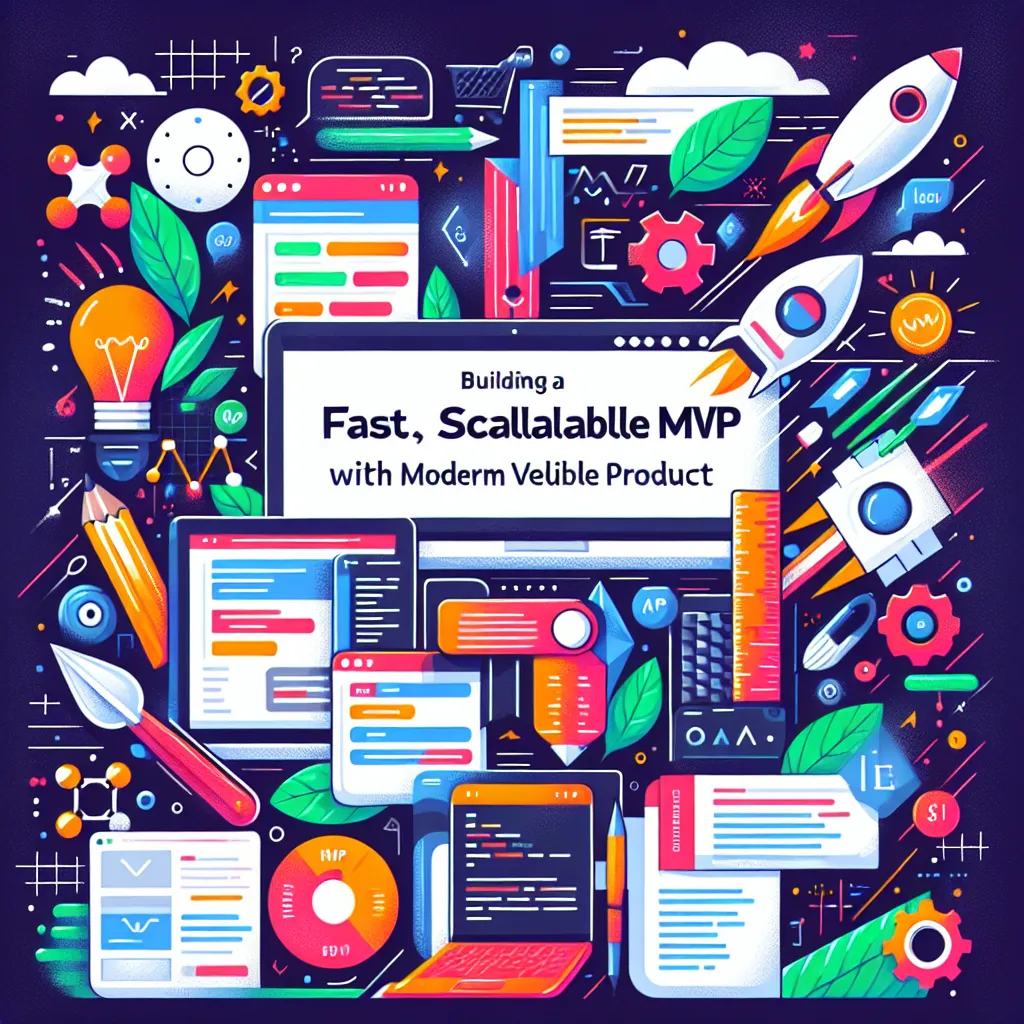Building a Fast, Scalable MVP with Modern Web Development Tools
Building a Fast, Scalable MVP with Modern Web Development Tools

Building a Fast, Scalable MVP with Modern Web Development Tools
The journey from idea to product starts with validating your concept. Whether you’re a startup founder, product manager, or entrepreneur, building a Minimum Viable Product (MVP) is one of the smartest ways to test your hypothesis, attract early adopters, and get valuable feedback. The key is to build something fast, scalable, and maintainable. In this blog post, we’ll walk through essential considerations and techniques for building a fast MVP using modern web development tools.
What is an MVP?
A Minimum Viable Product (MVP) is a version of a new product that includes only the core features necessary to deploy and satisfy early adopters. The goal is to test assumptions and validate market fit with minimal resources. A well-built MVP helps you:
- Prioritize essential features
- Minimize time to market
- Reduce development cost
- Gather user feedback quickly
Why Speed and Scalability Matter?
When building an MVP, speed is crucial to test and iterate. However, overlooking scalability can lead to technical debt, especially if the MVP gains traction. Deploying scalable architecture from the beginning ensures that growing your app doesn’t require a complete rebuild.
Modern web development technologies have drastically improved the ability to create robust MVPs quickly. Let’s dig into the technology stack that makes this possible.
Choosing the Right Tech Stack
Frontend: React or Vue
Both React and Vue are powerful JavaScript frameworks with component-based architectures. Here's how to choose:
- React: Backed by Facebook, with a massive ecosystem and flexibility. It's ideal for large projects and when planning to scale fast.
- Vue: Known for its simplicity and lower learning curve. Great for quick development and smaller teams.
Both provide advantages like reusable components, state management via Redux (React) or Vuex (Vue), and tight integration with REST or GraphQL APIs.
Mobile Option: React Native
If your MVP requires a mobile application, React Native is an excellent option. It enables you to share logic between your web and mobile applications, significantly cutting development time.
Backend: Node.js or Deno
- Node.js: A proven backend runtime, rich with libraries (npm), and offers real-time capabilities with WebSockets. Ideal for APIs and scalable backend services.
- Deno: Similar to Node but with a modern architecture, built-in TypeScript support, and increased security. Great for greenfield projects where bleeding-edge is acceptable.
Node and Deno both shine in creating REST and GraphQL APIs that power your frontend apps.
Database: PostgreSQL or MongoDB
- PostgreSQL: A robust, SQL-based database perfect for complex operations and structured data.
- MongoDB: A NoSQL database that is schema-less, great for rapid development and agile project iterations.
Use an ORM like Prisma (for Node/Deno) or Laravel's Eloquent to accelerate development and enforce best practices.
Styling: Tailwind CSS
Tailwind CSS is a utility-first CSS framework that helps create modern, responsive designs fast. Unlike traditional CSS frameworks (Bootstrap), Tailwind encourages composability and customization, leading to cleaner and more maintainable code.
For MVPs, Tailwind enables you to:
- Prototype UI quickly
- Maintain consistent design
- Remove unused CSS in production (thanks to PurgeCSS)
Setting Up A Scalable Project Structure
Monorepo Structure: Tools like Nx or Turborepo allow organizing web and mobile apps, backend services, shared libraries, and more within a single repository.
API First: Build an API layer that serves both web and mobile clients. This promotes reusability and scales better over time.
CI/CD Pipelines: Automate testing and deployment using GitHub Actions or GitLab CI. This increases development velocity and reduces errors.
Version Control and Branching Strategy: GitFlow or trunk-based development keeps your codebase clean and helps with collaboration.
Environment Configuration: Use .env files, config services, and Docker for consistent environments across development, staging, and production.
Launch Quickly with Vercel or Netlify
Frontend hosting platforms like Vercel and Netlify allow you to deploy JAMstack sites in seconds. Advantages:
- Instant previews for each PR
- CI/CD built-in
- Global CDN
- Serverless functions support
For backend, combine with Railway, Heroku, or Render to deploy your APIs, databases, and background jobs.
Testing and Metrics
You don't need full coverage for an MVP. Focus on critical paths:
- Use unit tests (Jest, Vitest) for core functions
- End-to-end tests (Playwright, Cypress) for user flows
Use Google Analytics or PostHog to capture user behavior. Use Sentry or LogRocket to monitor bugs and errors.
Is Low-Code a Good Idea?
For a super-fast MVP, tools like Webflow (for landing pages), Bubble (for full apps), or Airtable (as a backend) can be effective. However, if your product requires complex logic, integrations, or custom workflows—code is still king.
Real-World MVP Examples
1. Airbnb
Started as a simple one-page website to book air mattresses. Once validated, features like payment processing, host profiles, and filters were added.
2. Dropbox
Created an explainer video to showcase the MVP. Got massive signups before even building the full product.
3. Instagram
Launched as a photo-sharing app with just the essential features: take photo, edit, and share. Features like direct messaging or stories came later.
Key Takeaways
- Define the core functionality and eliminate non-essential features
- Choose modern stacks focused on speed and developer velocity
- Automate deployment and testing early to save time
- Build with future scalability in mind
- Monitor and iterate based on data
The MVP is not the final product. It’s the start of the journey. What matters is how quickly and effectively you learn from users and evolve the product.
⚡ Need help building a lightning-fast MVP or custom web app? We've got you covered. We offer MVP development services